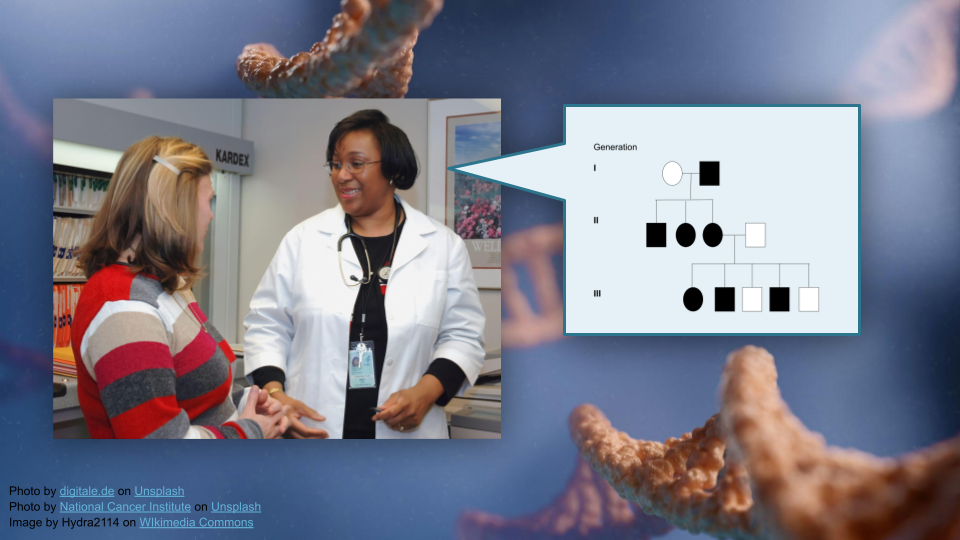
Family Markers: Using Multiply-Affected Families to Identify Risk Genes
Overview
This activity teaches students to interpret pedigree information and use bioinformatics tools (R) to build pedigrees for tracking disease traits in families. Students will work with real data from a bipolar disorder genetics study to understand how researchers understand risk genes using pedigrees.
Duration: Approximately 2-3 hours (depending on student familiarity with R)
Learning Objectives
Interpret pedigree information to determine the suitability of a DNA marker for tracking a disease trait in a family (see GSA learning objectives).
Build a pedigree using bioinformatics tools (R).
Materials and Setup
Students will need either:
- An internet connection for this activity as written (using Posit Cloud)
- A local installation of R or RStudio (with data downloaded and
kinship2package installed ahead of time)
Required R package:
kinship2Data hosting: https://genomicseducation.org/data/pedigree_data.csv
Download the R student activity as:
Google Slides presentation available for borrowing images here.
Answer key available here. Please message Ava Hoffman (ahoffma2 at fredhutch dot org) to get access.
Scientific Topics
The activity is based a published research study “Rare variants implicate NMDA receptor signaling and cerebellar gene networks in risk for bipolar disorder.” Students will gain exposure to the following:
Bipolar Disorder: Neuropsychiatric condition affecting ~1% of population, with 10-25% risk for children of affected parents
Cerebellum: Brain region containing 50% of neurons despite being 10% of brain volume; involved in motor coordination and emotional regulation
NMDA Receptors: Glutamate receptors crucial for memory and learning; blocked by substances like alcohol and ketamine
DAO Gene: D-amino acid oxidase gene identified as significantly associated with bipolar disorder risk
Outline
Part 1: Background and Setup (30-45 minutes)
Part 2: Basic Pedigree Construction (20-30 minutes)
Part 3: Adding Diagnostic Information (15-20 minutes)
Part 4: Genotype Mapping and Analysis (30-40 minutes)
Evaluation
GEMs is an NIH-funded program. Part of our mission is understanding the impact of our materials. Please take the time to review our program as an instructor. We also appreciate you distributing our survey to students after they participate in GEMs content.
Student survey